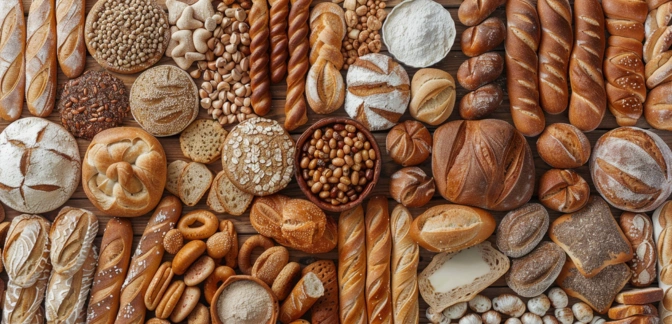Pita Bread — Nutrients, Health Benefits, And Shopping Tips

Written by Listonic Team
Last update on September 4, 2024
Pita bread nutrients
Nutrition facts
Amount per 100 g
Calories
🔥 275 kcal
| Nutrition per: 100 g | Value | % Daily Value* |
|---|---|---|
| Carbs | 56 g | 20.36% |
| Fiber | 2 g | 7.14% |
| Sugars | 1 g | 2% |
| Glycemic Index | 57 | - |
| Protein | 9 g | 18% |
| Sodium | 536 mg | 23.3% |
| Total Fat | 1 g | 1.28% |
*The % of Daily Value (DV) tells you how much a nutrient in a serving of food contributes to a daily diet. 2,000 calories a day is used for general nutrition advice.
1 g
🥕 Low Fat Content
1 g
🍏 Low Sugar Content
Pita bread facts & tips
Health benefits
- Provides carbohydrates, which are a primary source of energy for the body and brain.
- Can be a source of fiber if made from whole grains, promoting digestive health.
- Low in fat, making it a heart-healthy bread option.
- Versatile, suitable for various fillings and meals, including sandwiches and dips.
- Contains essential vitamins and minerals such as B vitamins and iron, supporting overall health.
Health risks
- High carbohydrate content particularly in pita bread made from refined white flour, which can cause rapid spikes in blood sugar levels, particularly concerning for diabetics.
- Low nutrient density as refined pita bread offers limited vitamins and minerals compared to whole grain options.
- Potential for overconsumption due to its palatable nature, leading to excessive calorie intake if not mindful of portion sizes.
- Gluten content making it unsuitable for individuals with celiac disease or gluten sensitivity, potentially causing digestive discomfort and other health issues.
How to choose pita bread
Pita bread should have a soft, slightly elastic texture and a pale, even color. The bread should puff up when heated, creating a pocket that is perfect for filling.
Avoid pita bread that is stiff or has a chalky texture, as it may be stale. Breads that smell sour or have visible mold should also be avoided, as they are not suitable for consumption.

How to store pita bread
Pita bread should be stored in a plastic bag at room temperature. This keeps it soft and prevents it from drying out. Properly stored, pita bread can last for up to a week.
Exposing pita bread to air can cause it to become stale quickly. Avoid refrigerating it as this can make it hard and dry. For longer storage, consider freezing pita bread, ensuring it's well-wrapped to maintain its freshness.
✅ Extra Tip
How long does it last?
Pita bread can last for 3-5 days at room temperature when stored in an airtight container. For longer storage, pita bread can be frozen for up to 3 months. Ensure it is tightly wrapped to prevent freezer burn.
What to do with leftovers?
Leftover pita bread can be used in a variety of savory dishes. Cut it into wedges and bake for pita chips, perfect for dipping into hummus, guacamole, or other spreads. Pita bread is also great when used as a base for mini pizzas, topped with sauce, cheese, and your favorite toppings.
Use pita bread to make sandwiches or wraps by filling it with meats, vegetables, and spreads, or slice it open and stuff with a filling for a pita pocket. If you have a lot of pita bread, consider making a batch of pita bread pudding by layering it with eggs, milk, and spices, then baking until set. Pita bread can also be torn into pieces and added to a salad like a traditional Fattoush, or used as a base for a pita nachos dish with cheese, meat, and vegetables. For a quick snack, warm pita bread and serve with olive oil and za'atar or your favorite dip.
👨⚕️️ Medical disclaimer
Discover products from other categories
Listonic Team
Fact-checked
Our editorial team checked this article to make sure it was accurate at the time of publishing it.
Get the top-rated shopping list app

pita bread
1 piece
Outline







